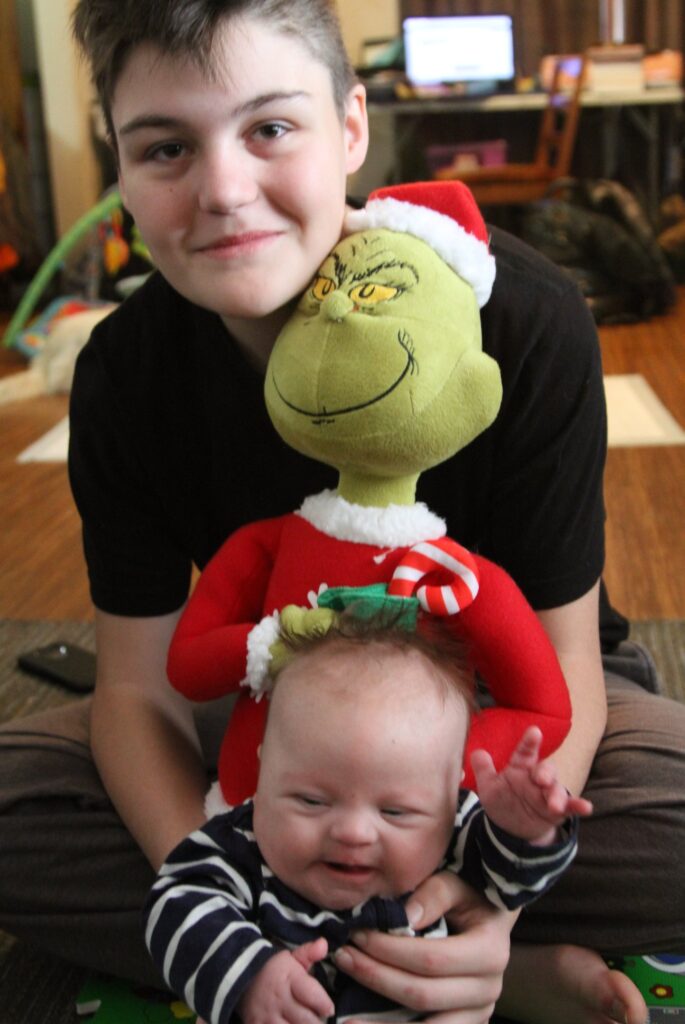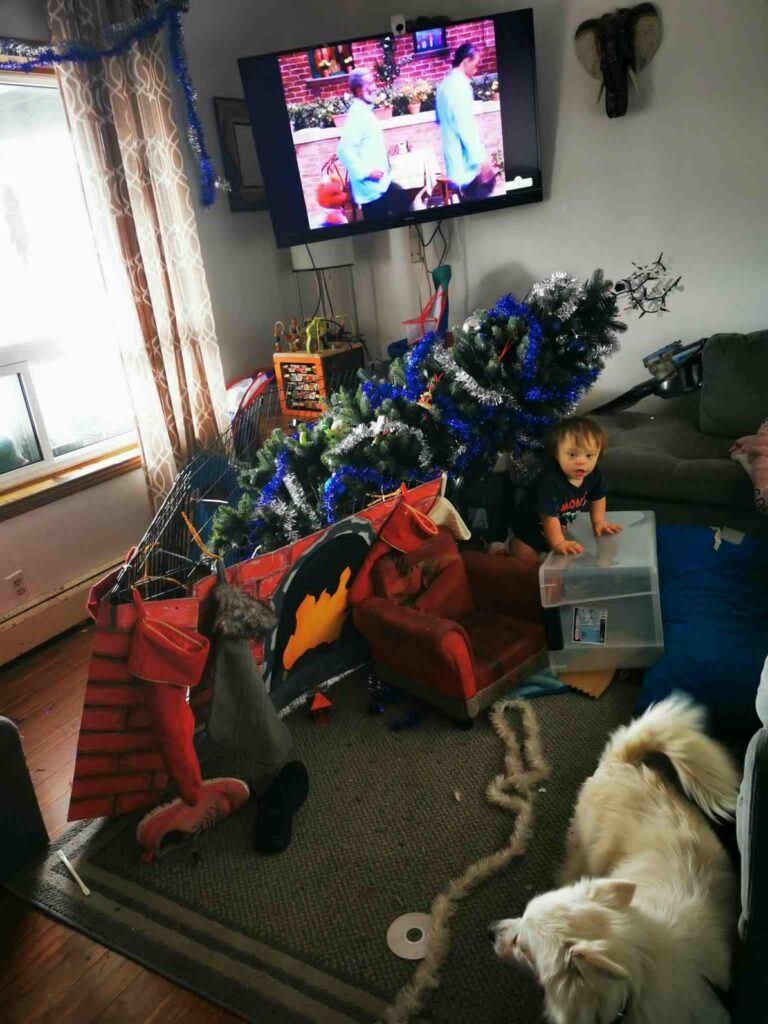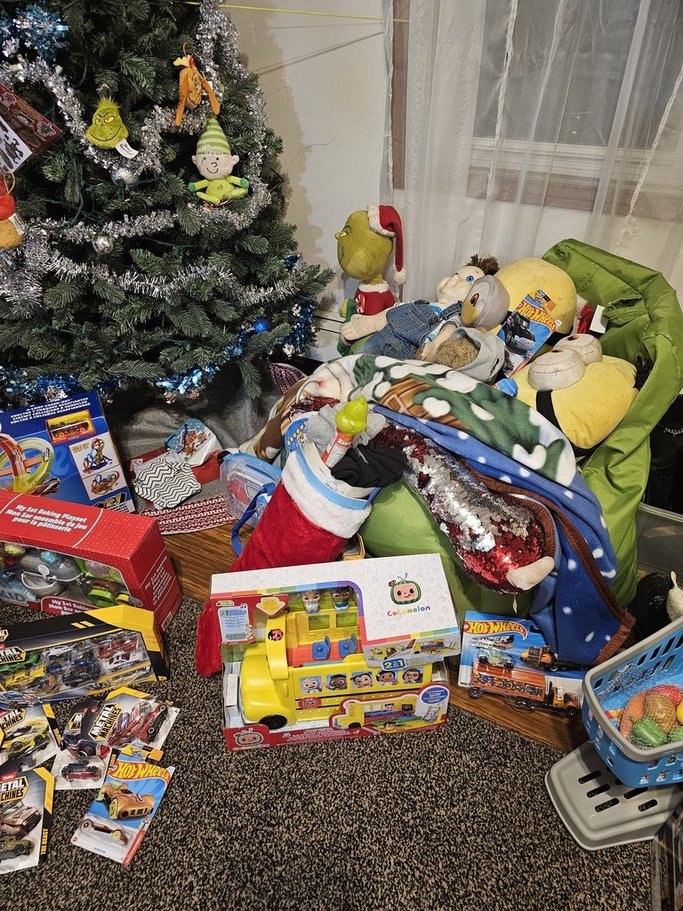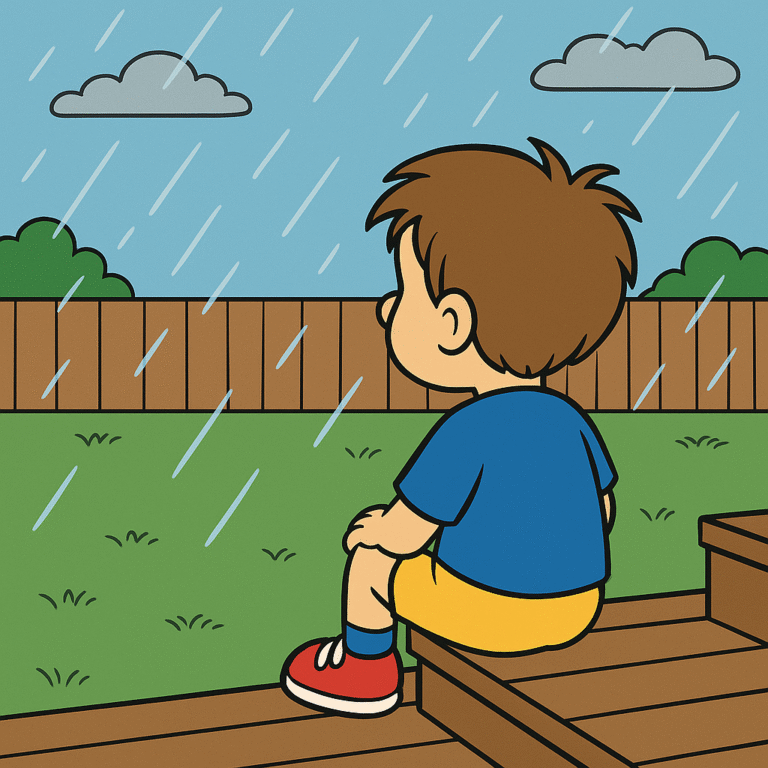Christmas Didn’t Get the Memo — So We Had to Rewrite It
For a long time, I didn’t talk openly about what Christmas actually looked like in our house. Not because I was ashamed of Jimmy — never that — but because I was afraid of the judgment that comes when your life doesn’t match what people think it “should” look like. I didn’t want the comments, the quiet side-eye, or the suggestions that if I just did things “right,” Jimmy would suddenly love Christmas like other kids.
So I kept a lot of it to myself.
But hiding it didn’t make it easier — it just made it lonelier. And I know now there are other parents out there silently doing their own version of “modified holidays” and wondering if they’re the only ones.
You’re not. And neither are we.
For seven years now, Christmas with Jimmy has been its own learning curve — one that has stretched me, humbled me, and forced me to rewrite what “holiday joy” even means. I have opened his gifts as late as the end of January. I have changed traditions I once thought were non-negotiable. I have learned that forcing joy never creates it.
So below, I’m walking year-by-year through what Christmas actually looked like for us — not the Pinterest version, not the Hallmark version — the real version. I’ll add photos as I go, and at the end I’ll share why this might be the first year I am cautiously letting myself hope.
Christmas 2018 —The Newborn Decoy Year
What it actually looked like:
Jimmy was barely 2½ months old, along for the ride and not yet forming Christmas opinions — which now feels almost comically peaceful in hindsight. His big sibling proudly posed him with a Grinch plush like a tiny prop in a holiday photoshoot, and he gave us the kind of gummy newborn smile that tricks you into thinking the holidays might always be this easy.
What I learned that year:
I didn’t know yet that Christmas would one day become hard. In 2018 I still believed we were headed toward the “typical” holiday arc — the baking cookies, the Santa photos, the magic in the air. Looking back, this was the calm before I knew I’d have to rewrite everything.

Christmas 2019 — The “He’ll Like It Next Year” Year

What it actually looked like:
By Jimmy’s second Christmas, I assumed his lack of interest was just an age thing — toddlers are unpredictable, right? But even with help, he wouldn’t open a single gift. No curiosity, no engagement, no spark. His big sibling tried to pose him again for the yearly Grinch tradition, but Jimmy’s face said everything: zero interest detected.
What I learned that year:
I still believed this was just a developmental delay in enthusiasm — that it would “kick in” when he was older. Looking back, this is when the pattern started, but I wasn’t ready to call it anything yet. I was still telling myself, “Just wait — next year will be the magic year.”
Christmas 2020 — The Year the Tree Became a Weighted Blanket
What it actually looked like:
This was the first year I realized Christmas wasn’t just “not interesting” to Jimmy — it became something entirely different. He started pulling the tree down… not to destroy it, but to cuddle it. He would drag it to the floor and press himself into the branches like it was a comfort object. Meanwhile, stockings, props, and decorations were collateral damage. And once again, he had zero interest in opening even a single gift — not with help, not with coaxing, not at all.
What I learned that year:
This was the year I stopped assuming he would “grow into Christmas” and started realizing we might be raising someone who experiences it differently — possibly someone I accidentally trained to bond with the Grinch more than the holiday itself. Looking back, this is when the rewrite of Christmas truly began.

We even built a makeshift “tree protection gate” that year — and his sister and I painted it to look like a fireplace to make it cute… but Jimmy still found a way to pull the tree down so he could cuddle it.
Christmas 2021 — The “Maybe If I Wait, He’ll Try” Year

At this point I thought, “If I just wait long enough, he’ll open something.”
Spoiler: he used the gifts as a climbing structure instead, and I ended up opening everything myself in January.
What it actually looked like:
I decided to give him as much time and space as he needed to explore Christmas on his own terms. We left everything out — gifts still wrapped, tree still standing — into January. I waited, hoping curiosity might finally kick in. Instead, what you see in this photo is Jimmy climbing on top of the gifts like they were a jungle gym… but still not opening a single one.
In the end, a few days later, I opened every present myself because it had simply gone too long.
What I learned that year:
This is the year I realized that patience alone wasn’t the solution — waiting didn’t make interest appear. He didn’t “get there eventually.” Christmas didn’t just need more time… it needed a completely different approach. And this is also where I started admitting to myself that The Grinch might have imprinted harder than I ever intended.
Christmas 2022 — The Year the Sadness Set In
What it actually looked like:
By this point, I didn’t have a single photo of Jimmy even attempting to open a gift, or showing interest in any part of Christmas. The only pictures I have are of him being held — exhausted, overwhelmed, and completely disengaged — while the Grinch remained the only constant companion. There was no curiosity, no excitement, no participation. Just absence.
What I learned that year:
This is the year the sadness finally landed. I stopped saying “maybe next year” and started grieving the version of Christmas I thought we were supposed to have by now. I wasn’t upset at Jimmy — I was mourning the expectation, the picture in my head. This was the year I realized I didn’t just need a new plan — I needed a new definition of “joy.”

At this point I didn’t even bother pretending — no gift-opening photos exist because there were no attempts to photograph.
Christmas 2023 — The “Maybe It’s the Paper” Experiment

New strategy: ditch the wrapping paper and try bags instead.
Result: bags were just as ignored as everything else. Nice try, Mom.
What it actually looked like:
This year I came in with a plan: no wrapping paper, just bags — thinking maybe the crinkling, tearing, and texture were the problem all along. For a moment there was a spark of hope — laughter, engagement, a tiny hint that maybe we were turning a corner. But even with the new strategy, he still didn’t open a single gift. Bags or boxes, it made no difference.
What I learned that year:
This is when I finally accepted that the barrier wasn’t the method — it was the holiday itself. You can change the packaging all you want, but if a child isn’t emotionally invested in the event, no amount of “hack” will create the magic. This was the year I stopped trying to fix Christmas and started trying to understand Jimmy.
Christmas 2024 — The “Make It Familiar” Strategy
What it actually looked like:
By this year, we removed wrapping entirely and tried something new — we brought “his people” into the celebration. Jimmy’s beloved stuffy gang and older favorite toys were staged right alongside the new ones in hopes that the familiarity would make the new gifts feel safer and more appealing. It was, at least, entertaining to watch… until he noticed his gang mingling with the outsiders. One by one, and very gently, he “rescued” them from the pile and carried them to safety, leaving the new toys untouched.
What I learned that year:
This is when it clicked that Christmas wasn’t failing because Jimmy didn’t understand — it was failing because he was actively protecting the world he already loved. To him, this wasn’t “new fun,” it was an invasion. And honestly… if you think about how loyal he is to his Grinch era, it kind of tracks.

No wrapping paper, familiar toys mixed in for comfort…
Result: he staged a rescue mission and evacuated his stuffies from the “new toy zone.”
Christmas 2025 — The “Hope With a Strategy” Year
What it will look like (if all goes to plan):
This year, we’re not waiting to see what happens — we’re preparing Jimmy for Christmas the way you’d prep for a new routine or a big transition. He will see Christmas coming in pieces, not all at once. A single wrapped gift left on his living-room mattress in a week or two. Later, a bagged one. Not to open — just to exist in his space until it feels normal. Lots of singing, dancing, repetition, and video modeling. We’ll include gift-giving at school so he gets to watch peers practice the ritual before it lands in front of him.
What I’m choosing to believe this year:
Maybe the goal isn’t to make him love Christmas… maybe the goal is to make Christmas something he can tolerate without distress — and celebrate in the ways that feel right for him. If he opens one gift, that will be huge. If he doesn’t, but smiles and stays regulated, that will be huge too. And if The Grinch still ends up being his emotional support holiday figure — then that’s just who he is, and we will build Christmas around Jimmy, not the other way around.
In the End… Maybe I Really Did Raise a Grinch
Looking back at all of this, I can see the pattern now: Jimmy never failed Christmas — Christmas just never got the memo about Jimmy. While I was waiting for him to love the lights, the wrapping, the big reveal… he was instinctively protecting the world he already loved. The Grinch was never a phase — it was a clue.
Maybe I didn’t “miss a step” or “do it wrong.”
Maybe I accidentally raised a Grinch — and learned how to love him exactly that way.
This year isn’t about forcing a Hallmark moment. It’s about making room for the version that makes sense for Jimmy. And if one day he decides to meet Christmas halfway, great. If not — well, we already know from experience that Christmas can be rewritten.
